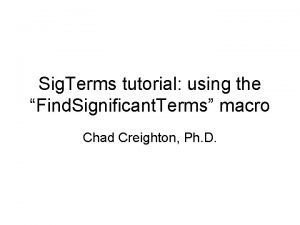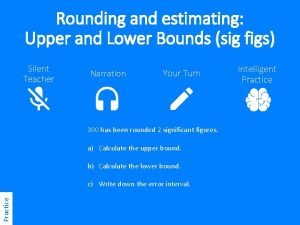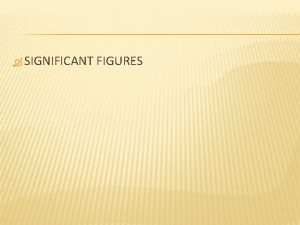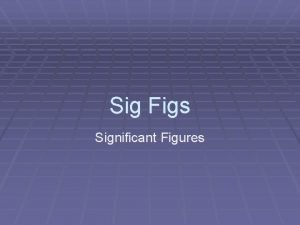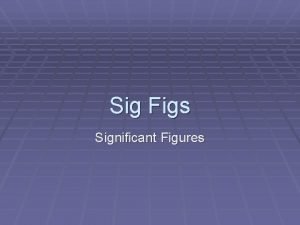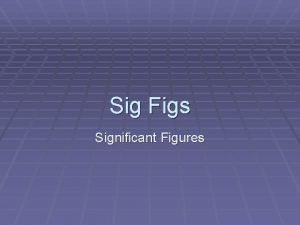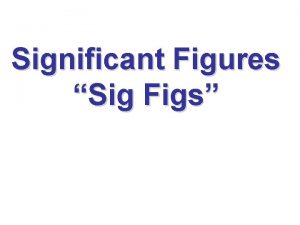Sig Terms tutorial using the Find Significant Terms









- Slides: 9

Sig. Terms tutorial: using the “Find. Significant. Terms” macro Chad Creighton, Ph. D.

Selecting the Annotation workbook • The Sig. Terms web site provides links to download pre-compiled Annotation workbooks for several types of gene class associations of potential interest (e. g. GO terms, micro. RNA targeting predictions). • Annotation workbook should be specific to the gene array that was used for the profiling. – All genes in the workbook should be represented on the array (any genes not on the array should not be represented in the Annotation workbook) – Workbooks specific to particular array platforms are available for download • User can construct his or her own Annotation workbook and specify gene-to-term associations – Details on Annotation workbook format on web site.

• Open both Sig. Terms. xls and Annotation workbook in Excel • Make sure your Excel allows the running of macros (see web site for details).

• In the Annotation workbook, insert a new worksheet • (Right-click on the worksheet tab, select “Insert”, and choose “New Worksheet. )

• In the new worksheet, paste the list of selected genes in the first column (starting from the first row). • Use Entrez gene number to specify gene – Duplicate Ids are okay. – For statistical calculations, should not include NULL or “---” or “///” containing entries, only entries for genes with Entrez numbers.

• Run the “Find. Significant. Terms” macro. • Selected gene worksheet should be “active” (i. e. at the front of all the other sheets) when running the macro. • Alt+F 8 or Tools->Macros (32 -bit Excel) displays the Sig. Terms macros.

• Specify the gene population – If choose “number of entries in Annotation sheet”, then selected gene list should not have any entries not in the Annotation worksheet – Otherwise, specify the number of unique, identified genes on the array (for pre-compiled Annotation workbooks, “Gene Pop” sheet has this number).

• “Enriched Terms” output worksheet lists gene class terms ranked by statistical enrichment • “Terms with Genes” output worksheet lists, for each term, the genes that fall under that term.

• If desired, one can link additional information to the genes (or micro. RNAs) listed in the output worksheets. • Can use “MATCH” and “INDEX” Excel functions (Illustrated above and in our Excel tutorial).
